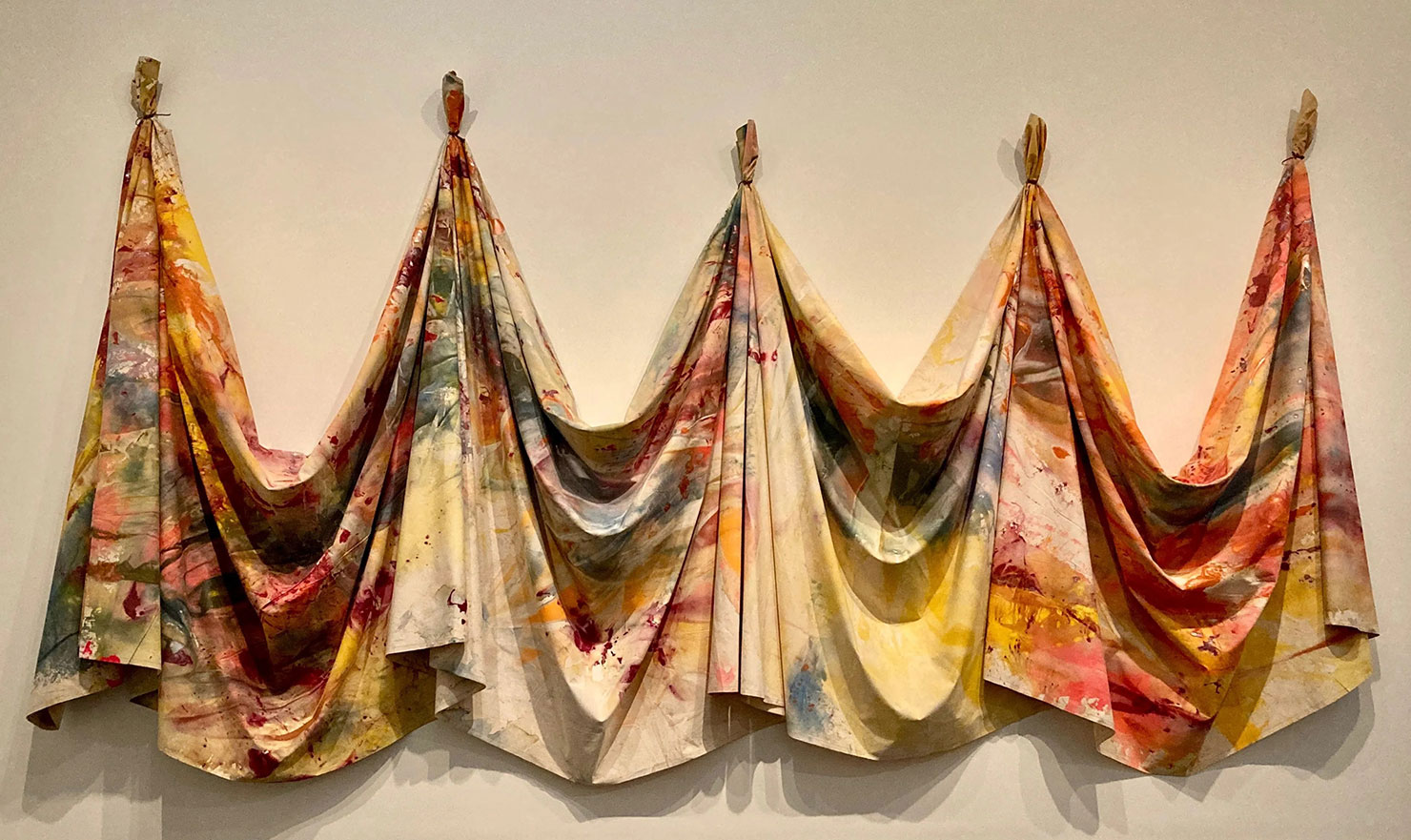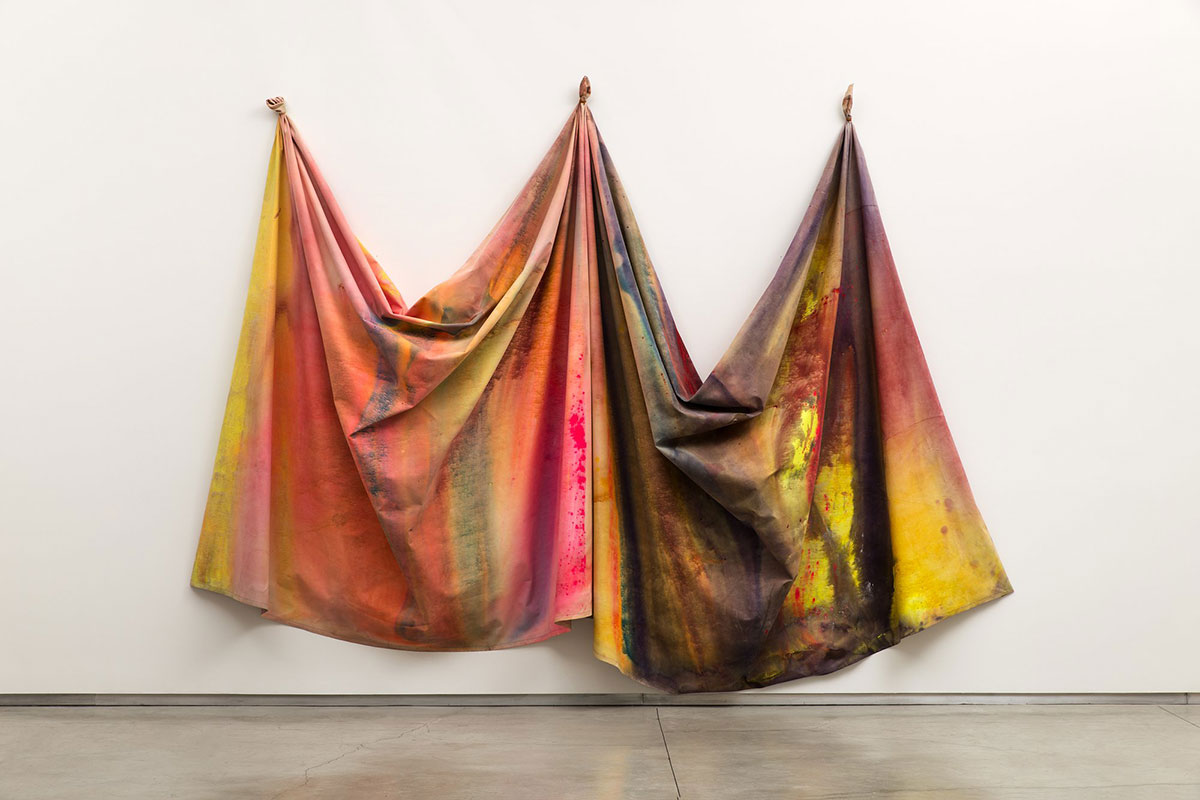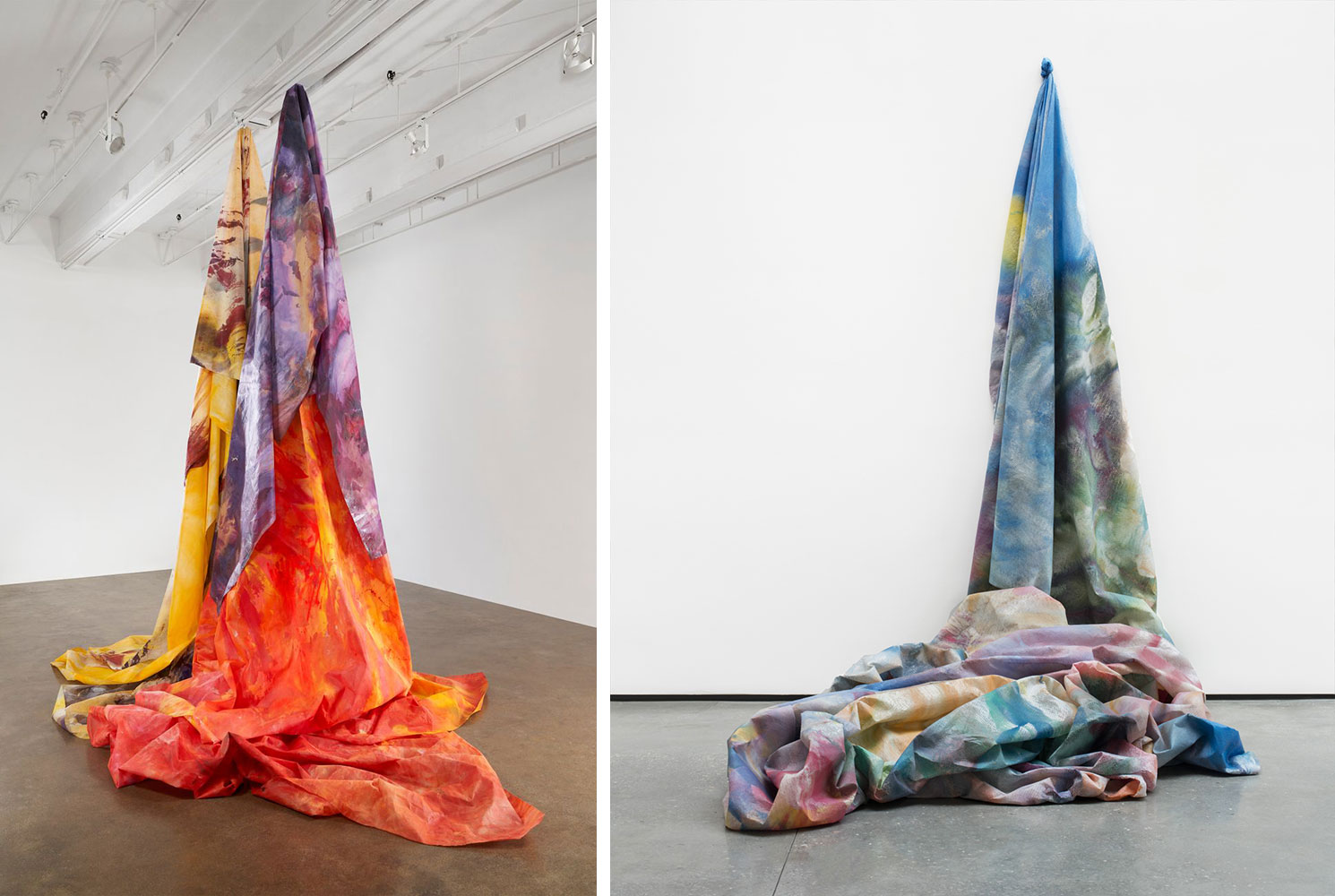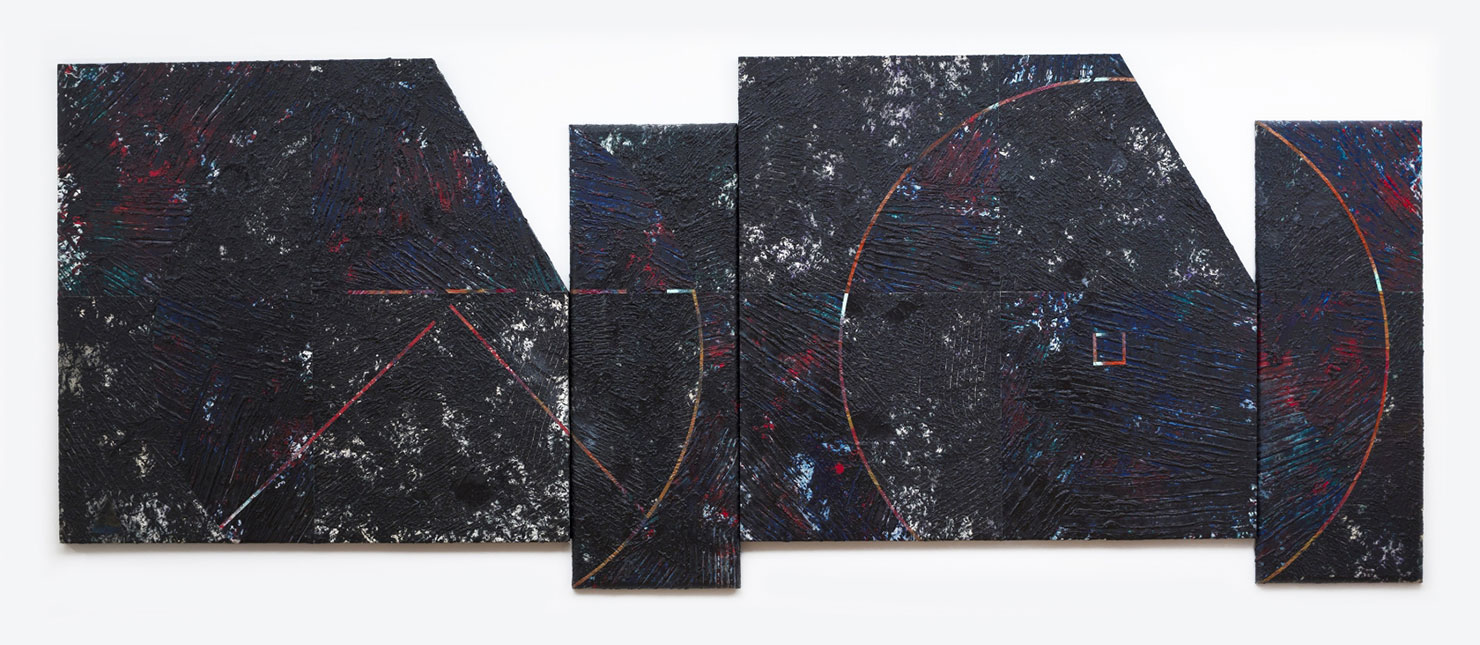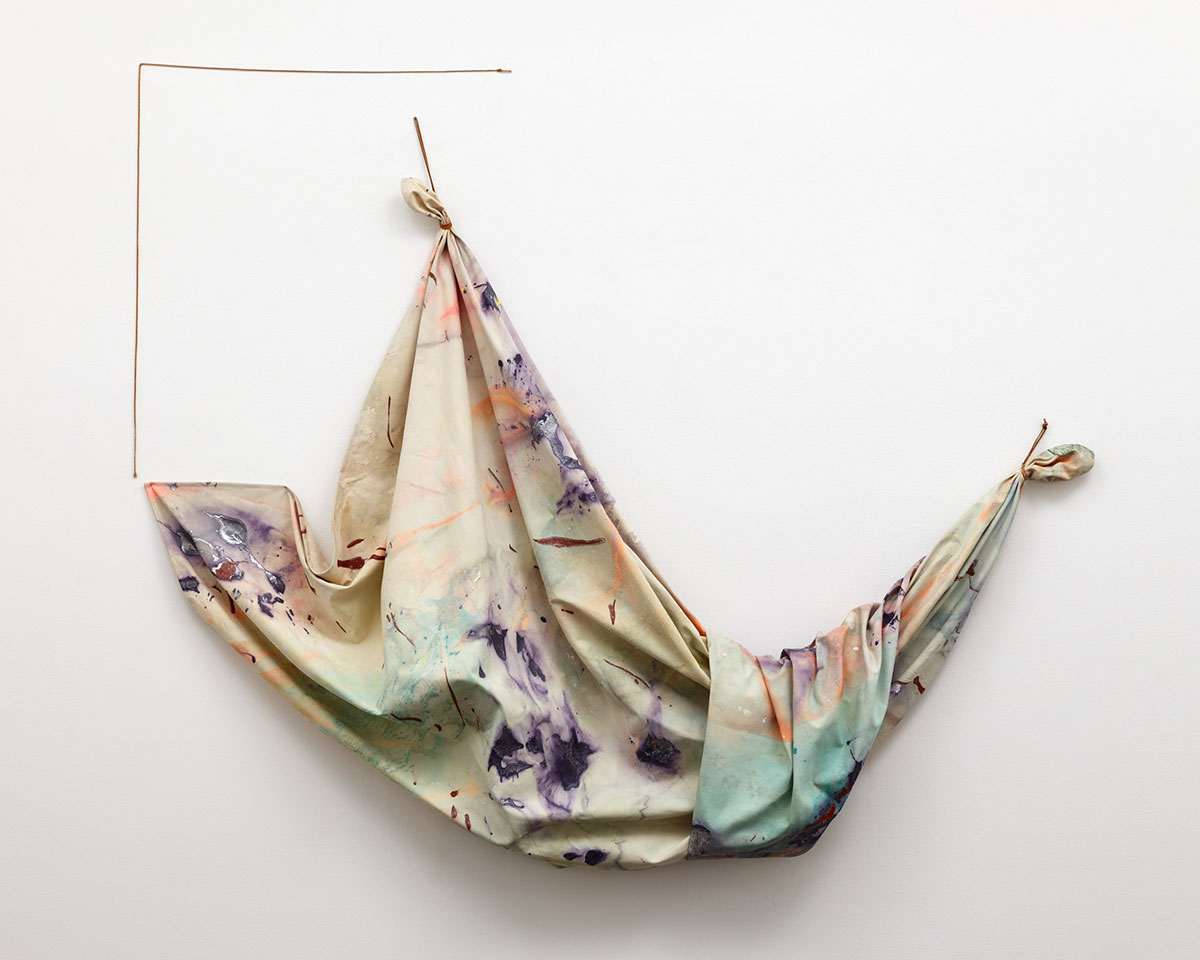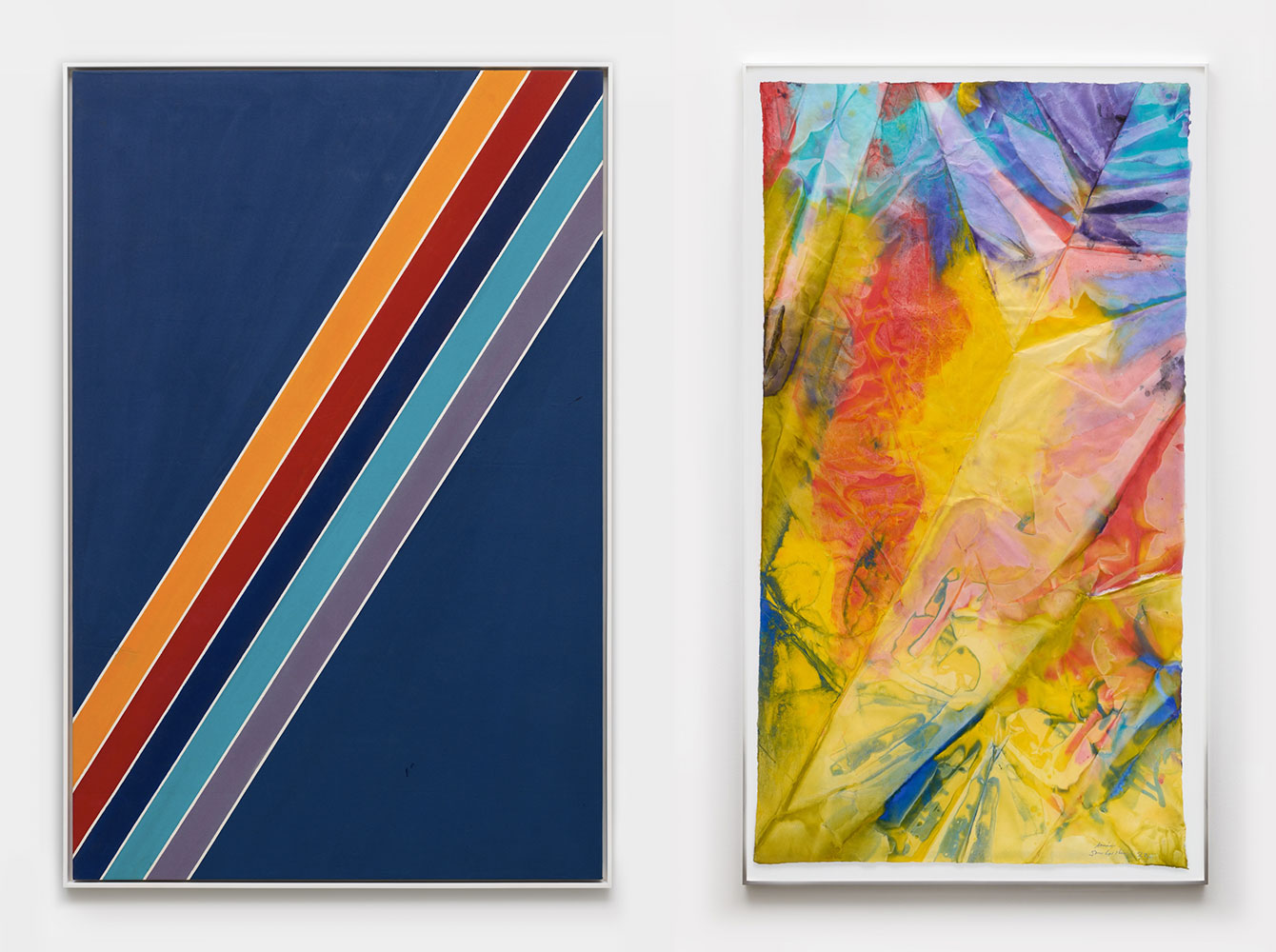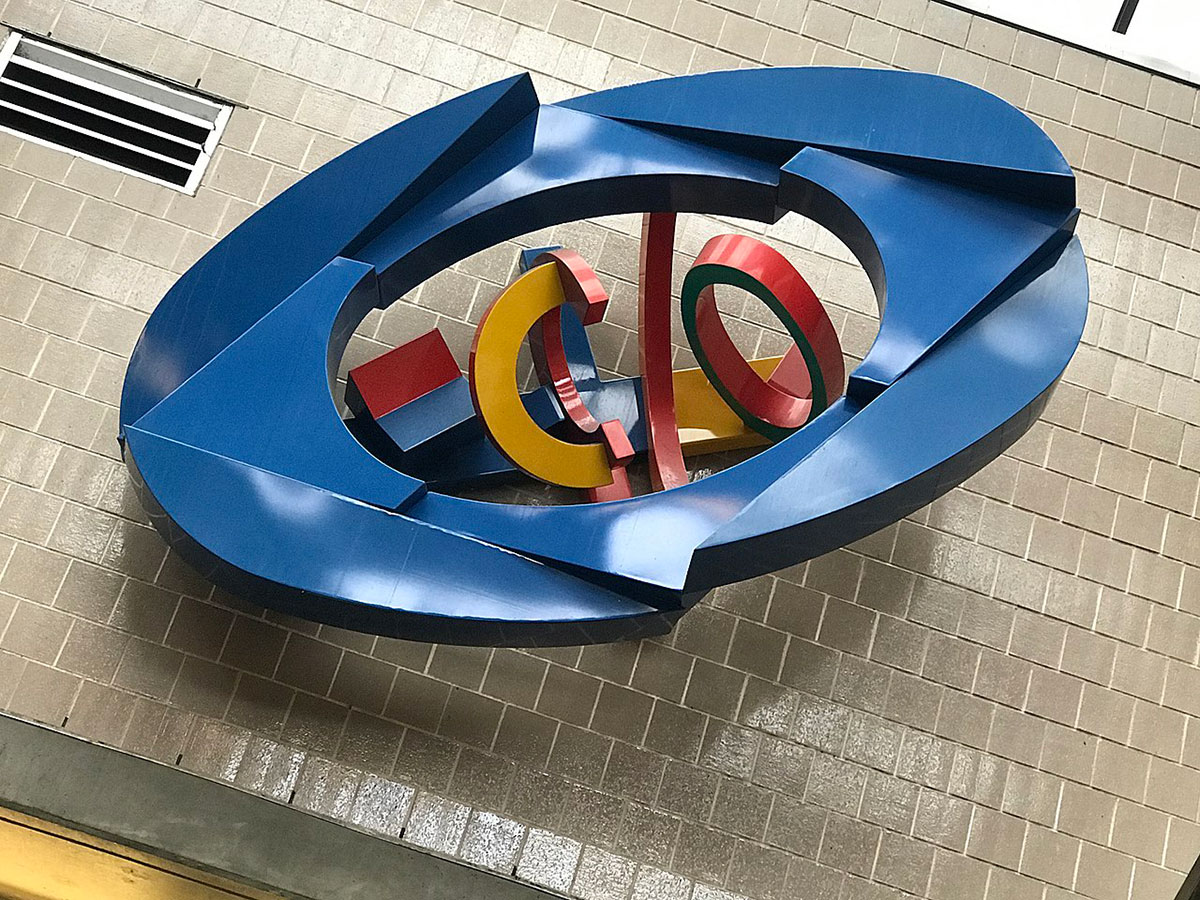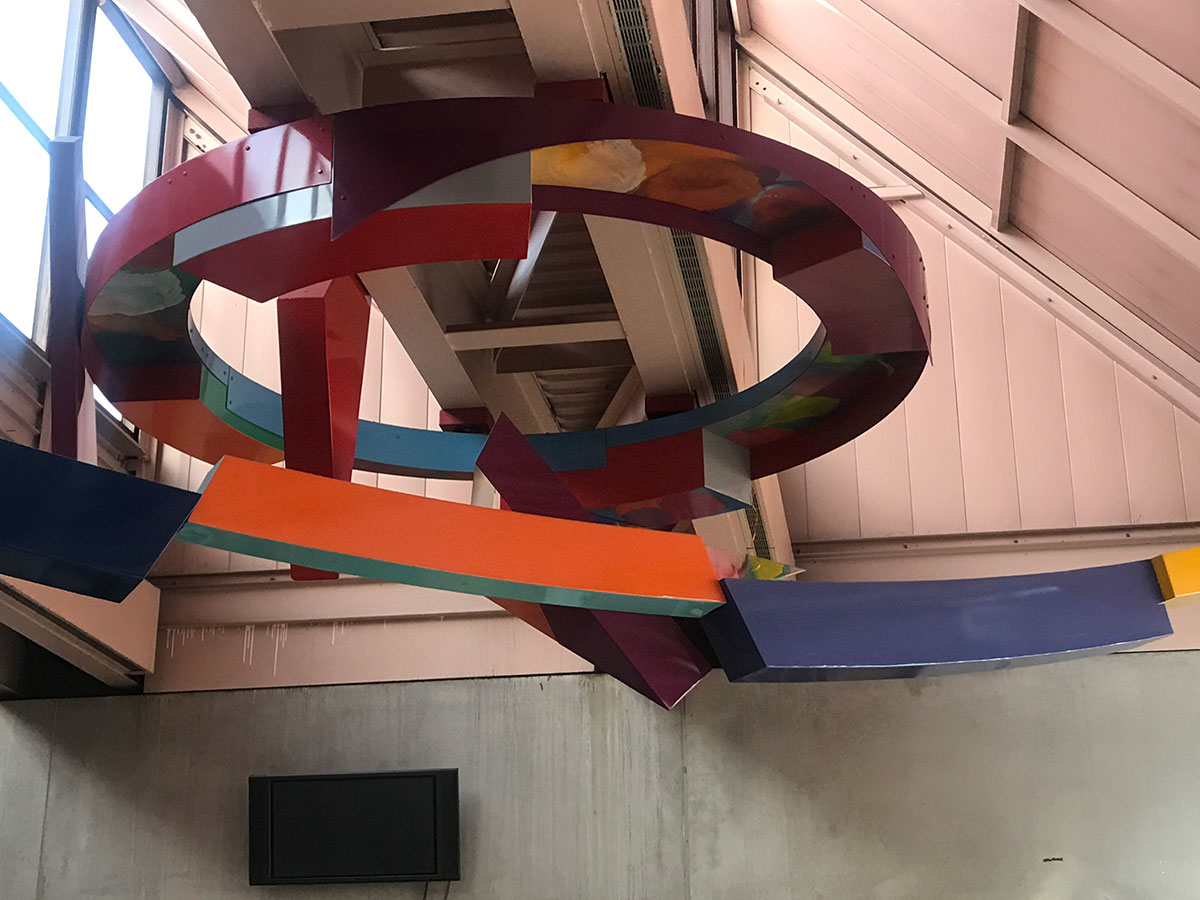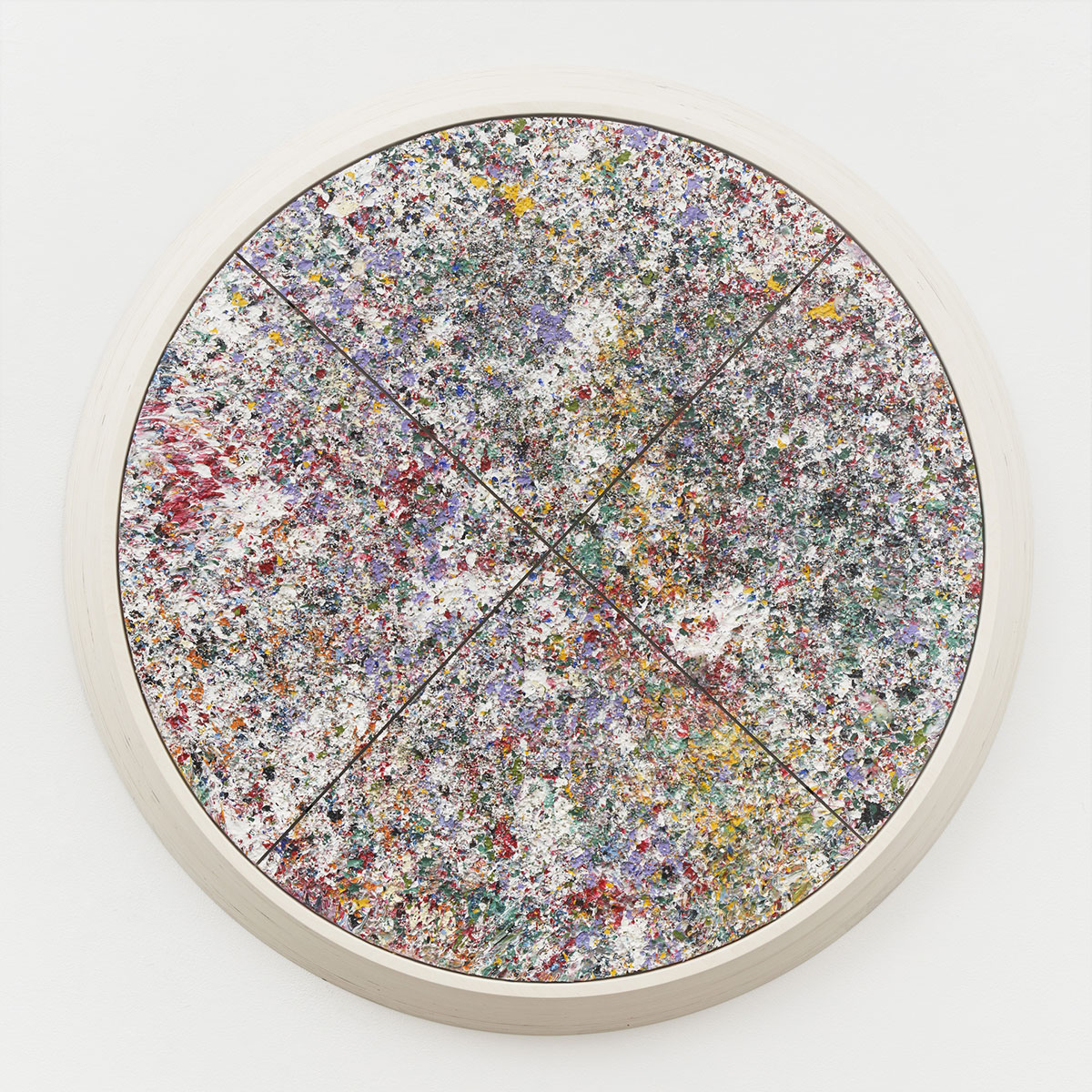TRACES: Sam Gilliam
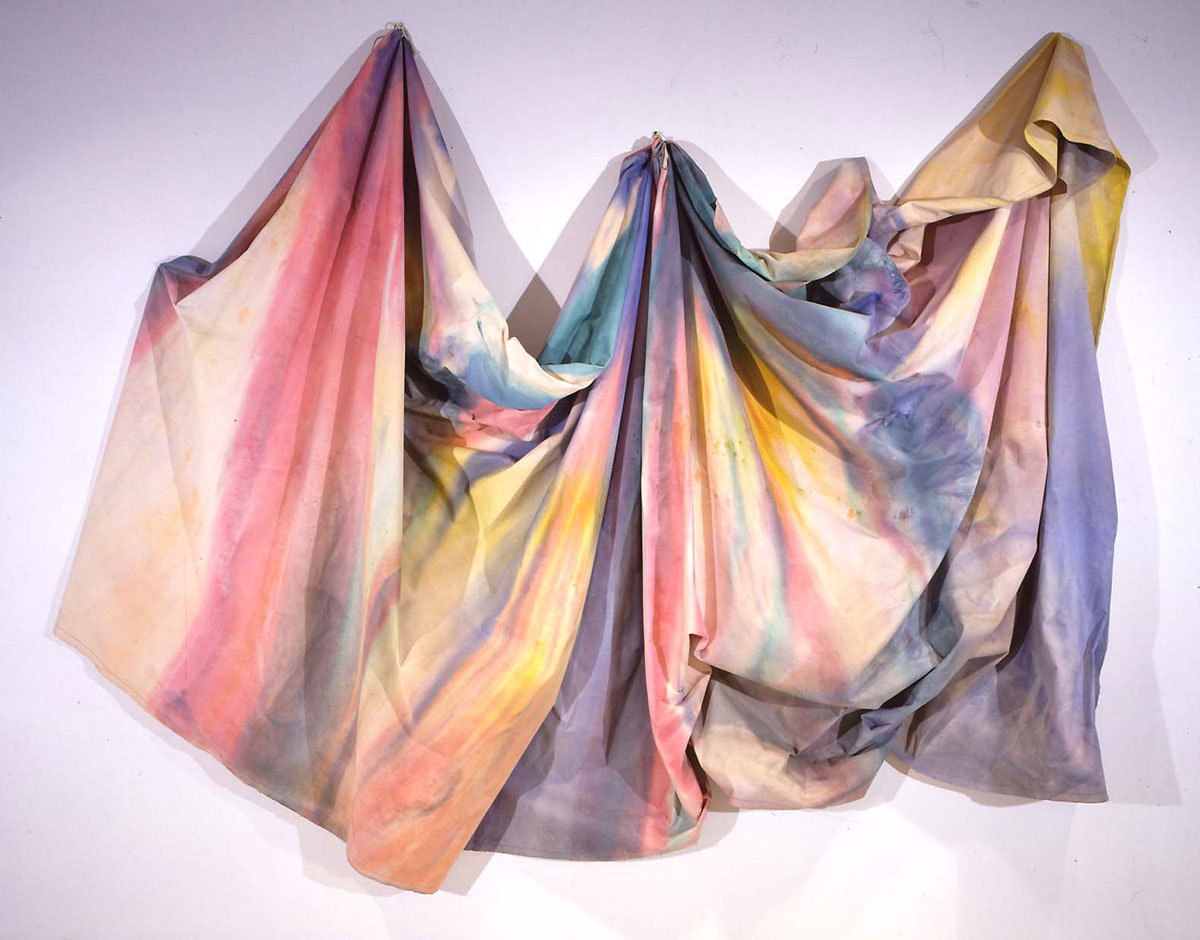 Sam Gilliam (30/11/1933-25/6/2022) is a leading African American abstractionist, and a key figure of American post-war painting. As an innovator within the Washington Colour School, Sam Gilliam’s art pushed the boundaries of color field abstraction. He is recognized as the first artist to introduce the idea of a draped, painted canvas hanging without stretcher bars around 1965. This was a major contribution to the Color Field School. Recent works in various media continue to blur the lines between painting and sculpture.
Sam Gilliam (30/11/1933-25/6/2022) is a leading African American abstractionist, and a key figure of American post-war painting. As an innovator within the Washington Colour School, Sam Gilliam’s art pushed the boundaries of color field abstraction. He is recognized as the first artist to introduce the idea of a draped, painted canvas hanging without stretcher bars around 1965. This was a major contribution to the Color Field School. Recent works in various media continue to blur the lines between painting and sculpture.
By Efi Michalarou
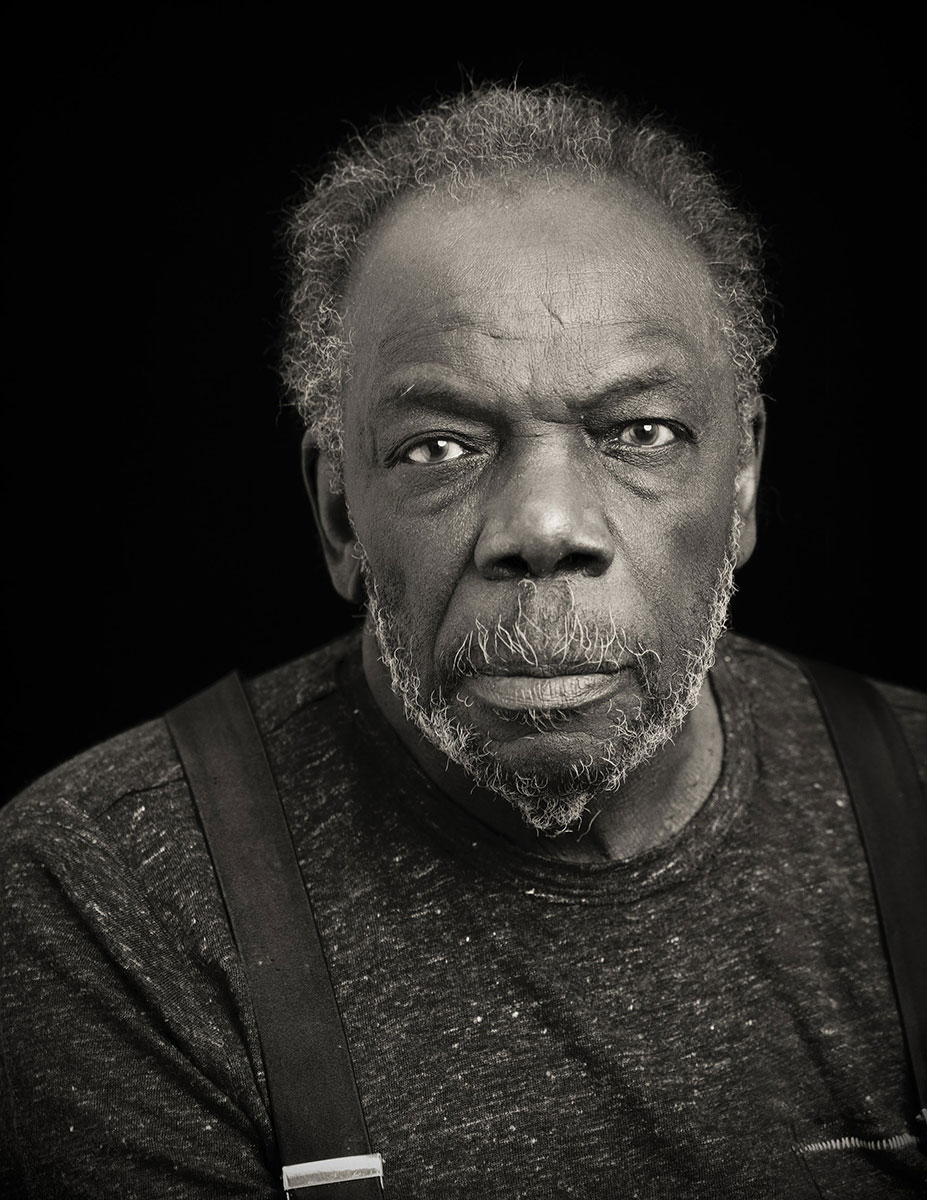 Sam Gilliam, Jr., was born on November 30, 1933, in Tupelo, Mississippi, to Sam, a railroad worker and Estery, a maternal engineer. The seventh of eight children, Gilliam and his family moved to Louisville, Kentucky, shortly after he was born. As a child, Gilliam always enjoyed painting and was actively encouraged by his teachers. In 1951, Sam Gilliam graduated from Central High School and attended the University of Louisville. In 1955, he received his B.A. degree in fine art, and also held his first solo art exhibition. Gilliam entered the U.S. Army in 1956 and served for two years. Following his discharge, he returned to the University of Louisville. After three years of graduate school, Gilliam received his M.A. degree in painting in 1961. Gilliam was influenced by German Expressionists such as Emil Nolde, Paul Klee, and the American Bay Area Figurative School artist Nathan Oliveira. Early influences included Morris Louis and Kenneth Noland. He says that he found many clues about how to go about his work from Tatlin, Frank Stella, Hans Hofmann, Georges Braque, Pablo Picasso, and Paul Cézanne. In 1963, artist Thomas Downing introduced Gilliam to the Washington Color School, which was defined by bold colors. Around 1965 Gilliam became the first painter to introduce the idea of the unsupported canvas. Partially inspired by women hanging laundry on clotheslines he observed from the window of his Washington studio, Gilliam abandoned the frame and stretcher, and began to drape and suspend large areas of paint stained canvas. This innovative and improvisational technique was phenomenally successful and of widespread influence. Gilliam received numerous public and private commissions for his draped canvases, earning him the title “father of the draped canvas.” These paintings were sometimes suspended from ceilings, arranged on walls, or on floors. They represent a third dimension in painting, and impart a sculptural quality. Though installed by the artist, Gilliam’s draped canvases could be rearranged at will, and he has frequently embellished these works with metal, rocks, and wooden beams. In 1971, Gilliam boycotted a show at the Whitney Art Museum in New York City in solidarity with the Black Emergency Cultural Coalition, in criticism that the museum did not consult black art experts in the selection of artists. In 1972, Gilliam represented the US at the Venice Biennale, the first African-American artist to do so. In 2017, he exhibited at the Venice Biennale once again, in the Giardini’s central pavilion. In 1973, Gilliam created for the San Francisco Museum of Art the free-standing work “Autumn Surf” which consisted of acrylic sheeting hung over wooden support beams to give the impression of waves. In “‘A’ and the Carpenter, I” (1973), he piled a great swath of canvas painted with airy clouds of pink and blue between two wood sawhorses, introducing an element of manual labor into a work that seemed elegant, if unfinished, and that, like much of Gilliam’s work, appeared different each time it was installed. By 1975, he had moved away from draped canvases to geometric collages, most notably the “Black Paintings” and the “White Collage Paintings”. Also, in 1975, Gilliam created “Seahorses” his first outdoor work, for the Philadelphia Museum of Art. The same year, Gilliam veered away from the draped canvases, and became influenced by jazz musicians such as Miles Davis and John Coltrane. He started producing dynamic geometric collages, which he called “Black Paintings” because they are painted in shades of black. In the 1980s Gilliam’s style changed dramatically once more, transitioning to quilted paintings reminiscent of African patchwork quilts from his childhood, using an improvisational approach. The transition between the two styles can be seen in his “Wild Goose Chase” series. In 1983, Gilliam was featured in his first major retrospective at the Corcoran Art Gallery in Washington, D.C. In the new millennium, Gilliam has continued to work with birch plywood and metal forms as structural elements. Though his work is featured in galleries throughout the world and he is a self-sustaining artist, Gilliam is committed to teaching youth the foundations of art and has worked in numerous facilities including Washington, D.C., Public Schools, Carnegie Mellon University and the University of Maryland. Sam Gilliam passed away on Saturday, June 25 at age 88.
Sam Gilliam, Jr., was born on November 30, 1933, in Tupelo, Mississippi, to Sam, a railroad worker and Estery, a maternal engineer. The seventh of eight children, Gilliam and his family moved to Louisville, Kentucky, shortly after he was born. As a child, Gilliam always enjoyed painting and was actively encouraged by his teachers. In 1951, Sam Gilliam graduated from Central High School and attended the University of Louisville. In 1955, he received his B.A. degree in fine art, and also held his first solo art exhibition. Gilliam entered the U.S. Army in 1956 and served for two years. Following his discharge, he returned to the University of Louisville. After three years of graduate school, Gilliam received his M.A. degree in painting in 1961. Gilliam was influenced by German Expressionists such as Emil Nolde, Paul Klee, and the American Bay Area Figurative School artist Nathan Oliveira. Early influences included Morris Louis and Kenneth Noland. He says that he found many clues about how to go about his work from Tatlin, Frank Stella, Hans Hofmann, Georges Braque, Pablo Picasso, and Paul Cézanne. In 1963, artist Thomas Downing introduced Gilliam to the Washington Color School, which was defined by bold colors. Around 1965 Gilliam became the first painter to introduce the idea of the unsupported canvas. Partially inspired by women hanging laundry on clotheslines he observed from the window of his Washington studio, Gilliam abandoned the frame and stretcher, and began to drape and suspend large areas of paint stained canvas. This innovative and improvisational technique was phenomenally successful and of widespread influence. Gilliam received numerous public and private commissions for his draped canvases, earning him the title “father of the draped canvas.” These paintings were sometimes suspended from ceilings, arranged on walls, or on floors. They represent a third dimension in painting, and impart a sculptural quality. Though installed by the artist, Gilliam’s draped canvases could be rearranged at will, and he has frequently embellished these works with metal, rocks, and wooden beams. In 1971, Gilliam boycotted a show at the Whitney Art Museum in New York City in solidarity with the Black Emergency Cultural Coalition, in criticism that the museum did not consult black art experts in the selection of artists. In 1972, Gilliam represented the US at the Venice Biennale, the first African-American artist to do so. In 2017, he exhibited at the Venice Biennale once again, in the Giardini’s central pavilion. In 1973, Gilliam created for the San Francisco Museum of Art the free-standing work “Autumn Surf” which consisted of acrylic sheeting hung over wooden support beams to give the impression of waves. In “‘A’ and the Carpenter, I” (1973), he piled a great swath of canvas painted with airy clouds of pink and blue between two wood sawhorses, introducing an element of manual labor into a work that seemed elegant, if unfinished, and that, like much of Gilliam’s work, appeared different each time it was installed. By 1975, he had moved away from draped canvases to geometric collages, most notably the “Black Paintings” and the “White Collage Paintings”. Also, in 1975, Gilliam created “Seahorses” his first outdoor work, for the Philadelphia Museum of Art. The same year, Gilliam veered away from the draped canvases, and became influenced by jazz musicians such as Miles Davis and John Coltrane. He started producing dynamic geometric collages, which he called “Black Paintings” because they are painted in shades of black. In the 1980s Gilliam’s style changed dramatically once more, transitioning to quilted paintings reminiscent of African patchwork quilts from his childhood, using an improvisational approach. The transition between the two styles can be seen in his “Wild Goose Chase” series. In 1983, Gilliam was featured in his first major retrospective at the Corcoran Art Gallery in Washington, D.C. In the new millennium, Gilliam has continued to work with birch plywood and metal forms as structural elements. Though his work is featured in galleries throughout the world and he is a self-sustaining artist, Gilliam is committed to teaching youth the foundations of art and has worked in numerous facilities including Washington, D.C., Public Schools, Carnegie Mellon University and the University of Maryland. Sam Gilliam passed away on Saturday, June 25 at age 88.

